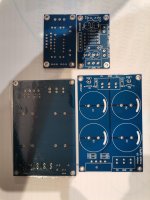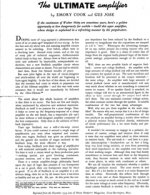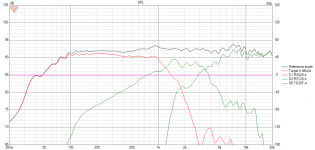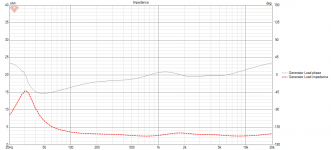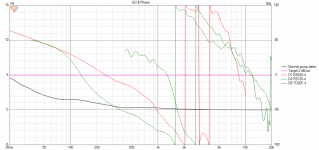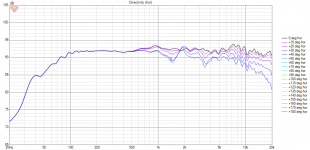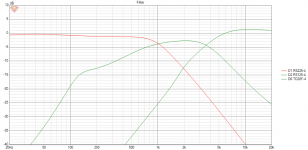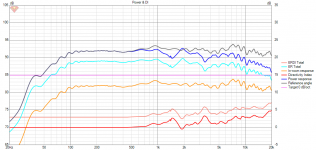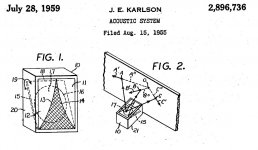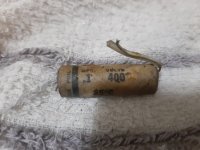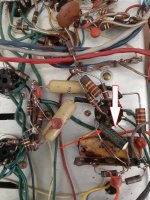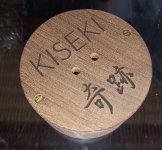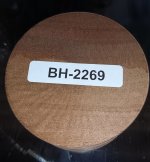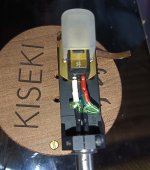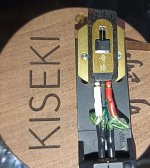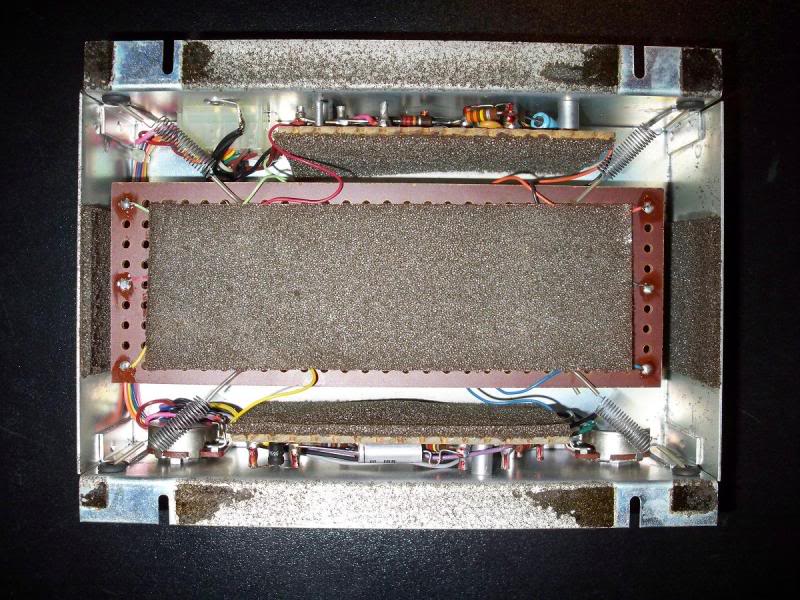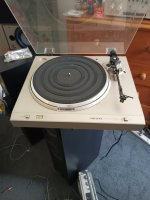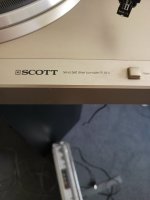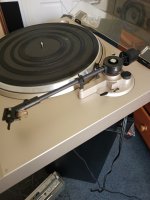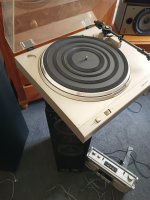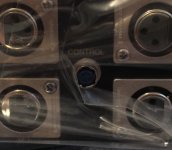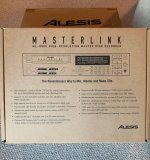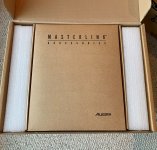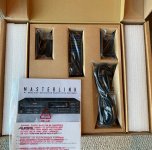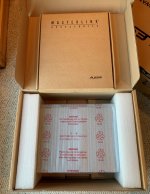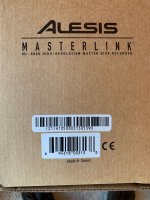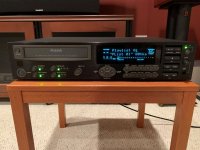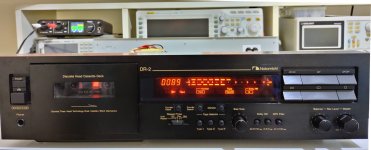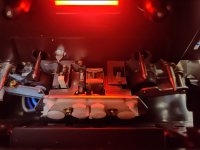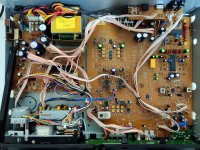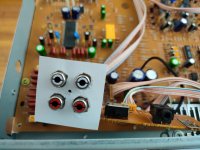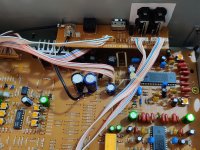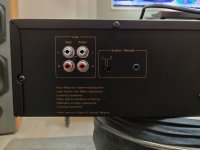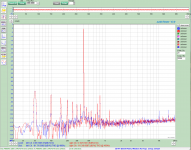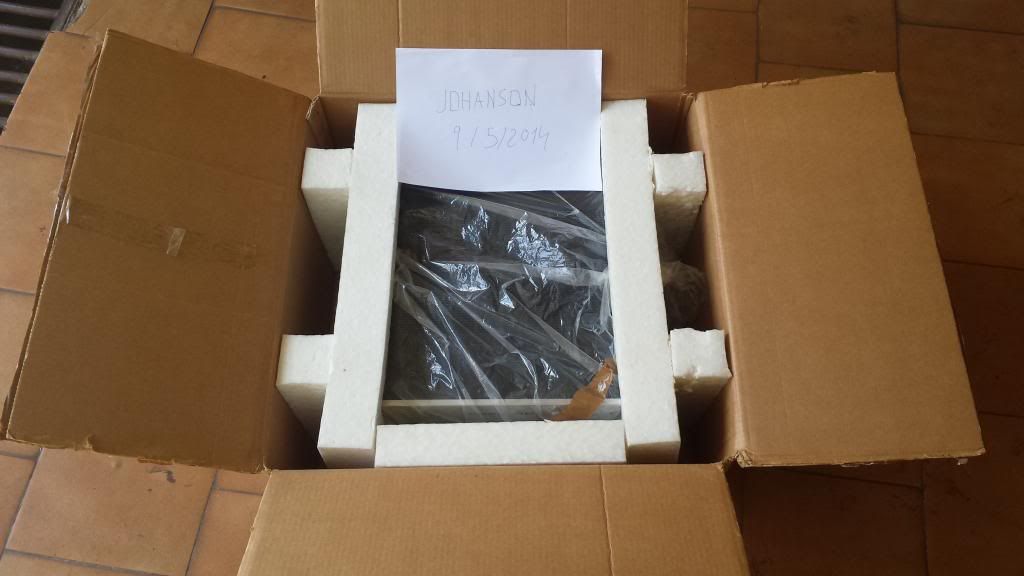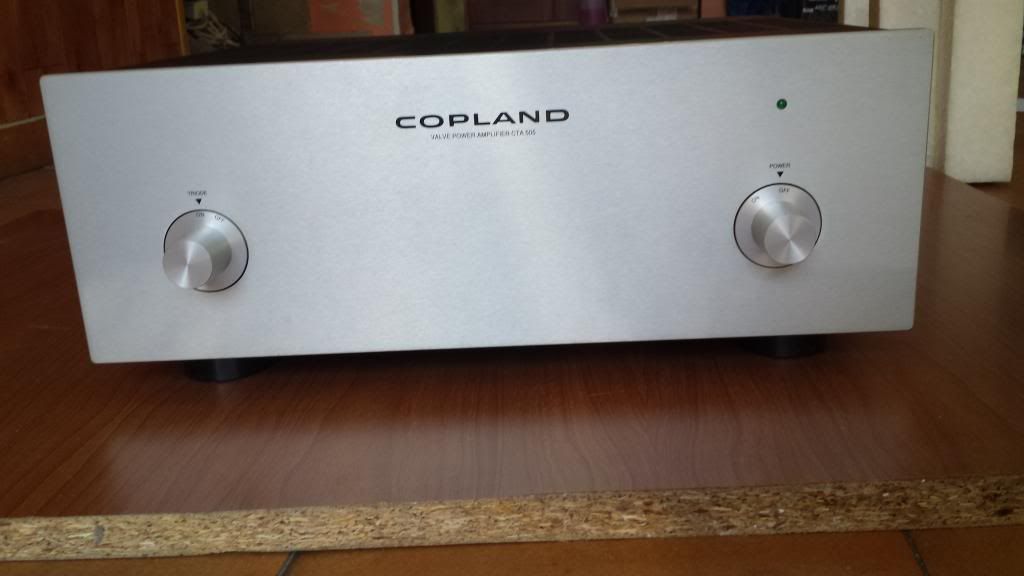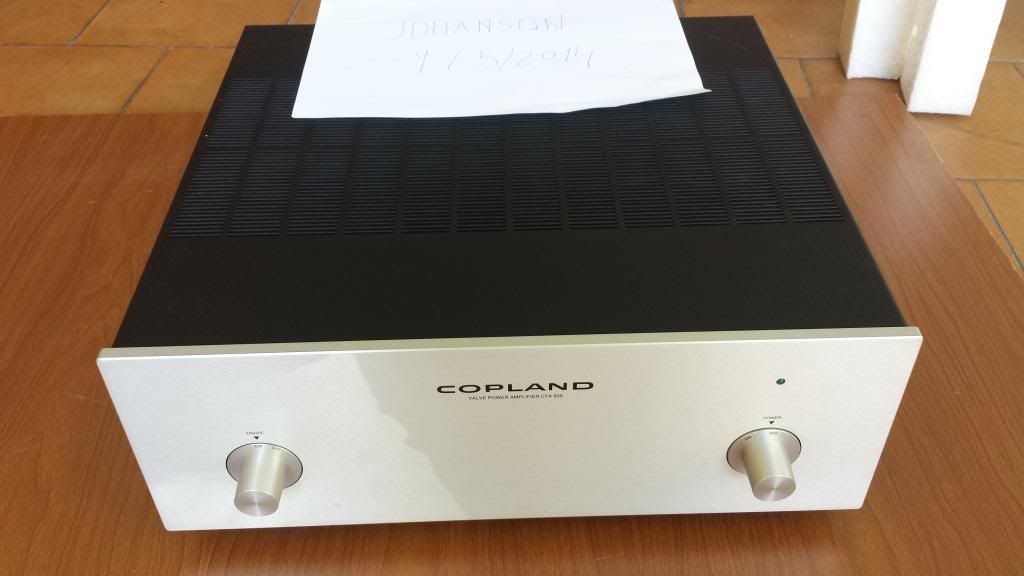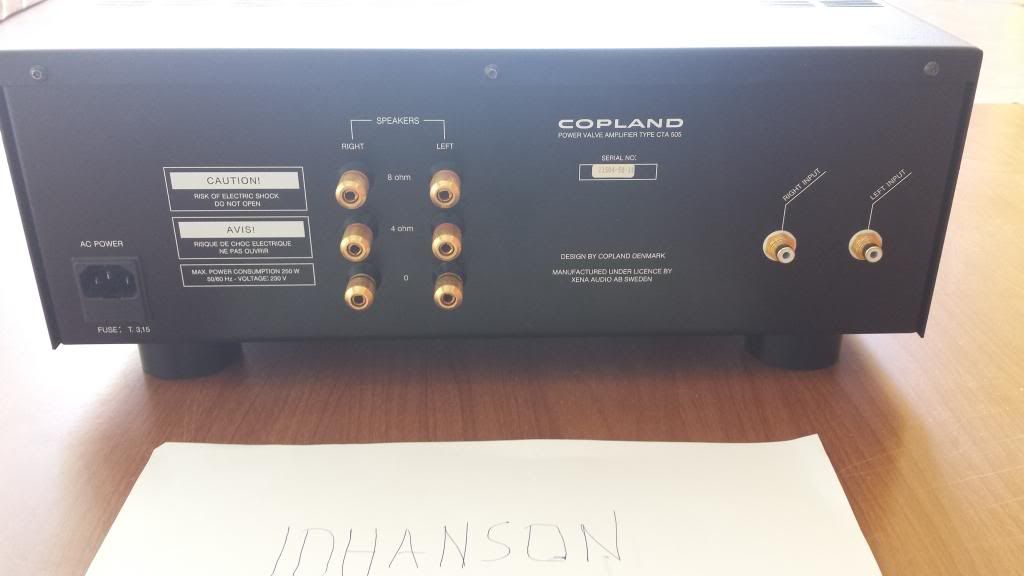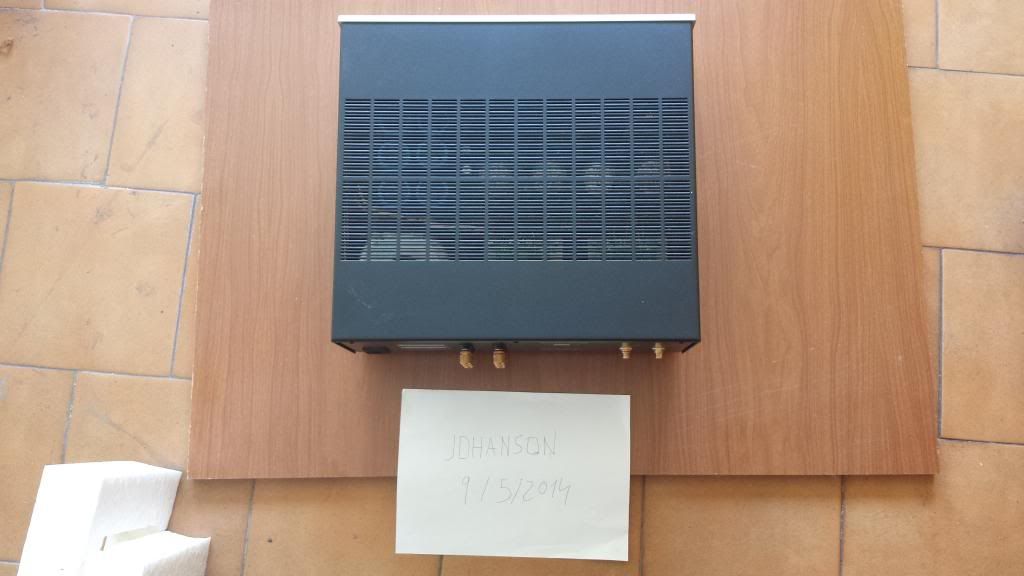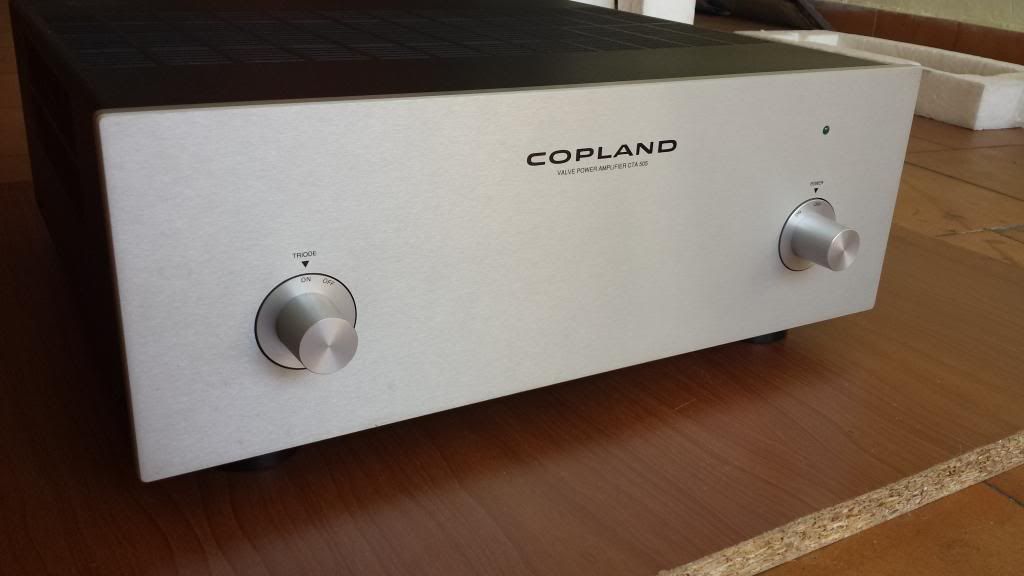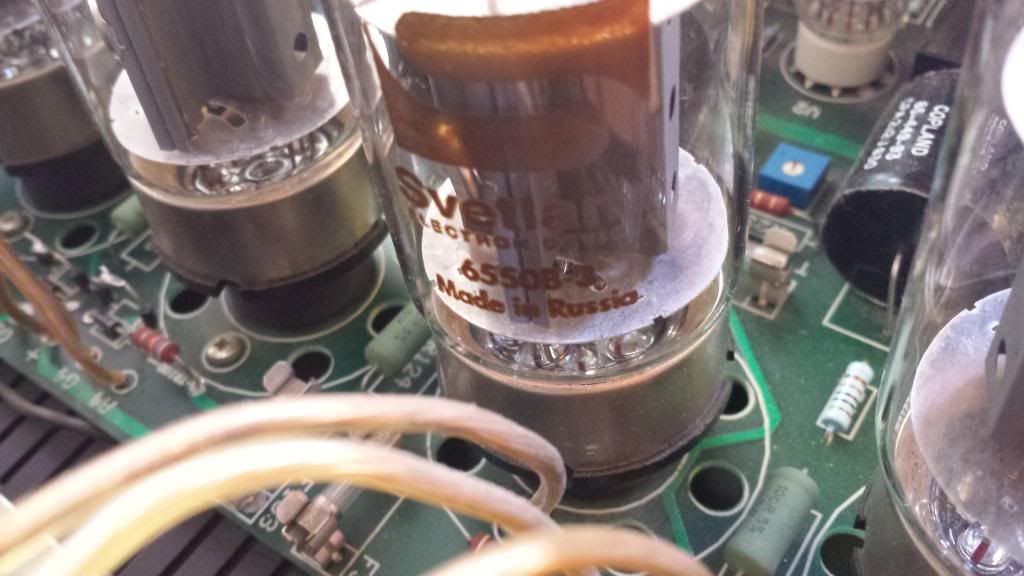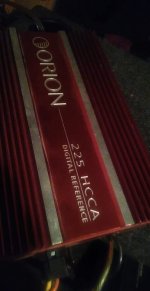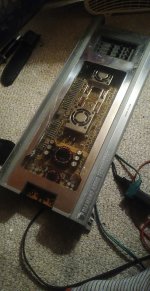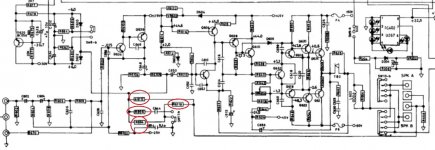Hi
Im not sure this is the right place to ask, but I am frustrated and desparated.. so hopefully some experts can give me some ideal of how to fix this amp.
I have a Rotel RMB-1095 amplifier (produced around 2003). It is a 5 channels, 200w/channel. I only connected and used 2 front channels (L,R) at lower volume (20-25% power). The amp worked well except it RANDOMLY went into protection mode!! Sometime it was 1 hour into the movies, sometime 3,4 hrs, or even every 2-3 days (RANDOMLY, unpredictable!!). When the protection mode kicked in, all 5 LED (for 5 channels) turned on, and sound disappeared (even though I only connected/used 2 front channels!!). As soon as I reset the power (On/Off), the unit worked well again until the next shut down! This unit run quite hot, but I placed 2 computer fans on top cover, so overheat should not be a problem. I tried to isolate the issue and did an experiment:
1. Connected power + signal input + speakers ...... unit shut down
2. Connected power + signal input. DISCONNECTED speakers .... unit shut down.
3. Connected only power. DISCONNECTED signal inputs ...... unit would run perfect for weeks, NO protection mode kicked in!!
Also noted, I have this same setup of speakers, cables, signal input (Denon AVR) for years with other amps... all worked perfect, so we can eliminate the speakers and cables factors.
I sent the amp to Rotel AUTHORIZED service center. Per Rotel's service bulletin, he replaced the 5 resistors (which supposed to be under voltage..etc..), rebuilt "protection power supply" board. He stated that the unit tested and worked fine. As soon as I took it home, the same protection circuit triggered again (no improvement at all!!). I had since brought it back to Rotel's technician 3 times, and he could not anything wrong with it!!
I am so frustrated and tired with this amp. I had invested more than $1500 in to this, hoping I can keep it for another 10 years.... But the protection circuit trigger drove me nut!!. I have invested too much to justify throwing it away!!. Can someone have any idea what to look for? where should I check out? which components might be the issue?? Or even any local shop that is capable of fixing these type of issues?? I am from Orange County, near Los Angeles area... dont mind driving around 100 miles radius if there is somebody around here that know how to fix it. Thank you
